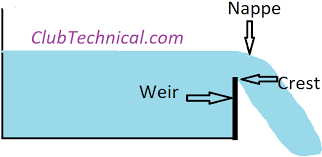Steel vs. Wood Framing
Steel vs. Wood Framing: A Comparative Analysis for
Building Durability
When it comes to building a durable structure, the choice of framing material is one of the most important factors to consider. Wood and steel are two of the most common materials used for framing, but they have different advantages and disadvantages that affect their performance and longevity.
In this blog post, we will compare and contrast wood and
steel framing in terms of their durability, and offer some suggestions on how
to improve it.
Durability is the ability of a material to resist
deterioration or damage from various influences, such as weather, insects,
fire, moisture, corrosion, etc. Durability is influenced by both the inherent
properties of the material and the external factors that affect it. For
example, wood is a natural material that has a high strength-to-weight ratio,
good thermal insulation, and easy workability. However, wood is also
susceptible to decay, rot, mold, termites, and fire. Steel is a manufactured
material that has high tensile strength, ductility, and fire resistance. However,
steel is also prone to corrosion, rust, thermal expansion and contraction, and
noise transmission. Clearly both have distinct advantages and disadvantages.
Wood vs. Steel
To compare the durability of wood and steel framing in
scenarios such as wood or metal stud wall construction,
we need to consider how they respond to different influences and how they can
be protected or maintained. Here are some of the main factors that affect the
durability of wood and steel framing:
Weather: Wood framing can be damaged by
exposure to sunlight, rain, snow, wind, and temperature changes. Wood can warp,
crack, split, or shrink due to moisture content fluctuations. Wood can also
fade or discolor due to ultraviolet rays. Steel framing can also be affected by
weather conditions, especially by humidity and salt spray. Steel can corrode or
rust when exposed to oxygen and water. Steel can also expand or contract due to
temperature changes, which can cause structural stress or distortion.
Insects: Wood framing is vulnerable to
insect attacks, especially by termites and carpenter ants. These insects can
eat away the wood and compromise its structural integrity. Steel framing is
immune to insect damage, as insects cannot penetrate or consume metal.
Fire: Wood framing is combustible and
can catch fire easily. Wood can also contribute to the spread of fire and smoke
in a building. Steel framing is non-combustible and can resist fire for a
longer time. However, steel can lose its strength when exposed to high
temperatures, which can cause it to buckle or collapse.
Moisture: Wood framing can absorb moisture
from the air or from leaks or spills. Moisture can cause wood to swell or rot,
which can weaken its structure and create health hazards such as mold or
mildew. Steel framing can also be affected by moisture, as it can accelerate
corrosion or rusting. Moisture can also cause condensation or dripping on steel
surfaces, which can damage other materials or create noise problems.
Corrosion: Wood framing does not corrode, but
it can decay or rot due to biological agents such as fungi or bacteria. Steel
framing can corrode due to chemical reactions with oxygen and water. Corrosion
can reduce the thickness and strength of steel and create holes or cracks on
its surface.
Maintenance: Wood framing requires regular
maintenance to prevent or repair damage from weathering, insects, fire,
moisture, or decay. Maintenance may include painting, staining, sealing,
caulking, treating, or replacing wood components. Steel framing also requires
maintenance to prevent or repair damage from corrosion, rusting,
thermal expansion or contraction, or noise transmission.
Maintenance may include cleaning,
coating, galvanizing, painting, or replacing steel
components.
How can we maximize the durability
of materials?
To improve the durability of wood and steel framing, there
are some measures that can be taken during the design, construction, and
operation stages of a building project. Here are some of the possible ways to
enhance the durability of wood and steel framing:
Design
The design of a building should consider the environmental
conditions and potential hazards that may affect the durability of the framing
material. The design should also comply with the relevant codes and standards
that specify the minimum requirements for durability performance. For example,
the design should ensure adequate ventilation, drainage, insulation, fire
protection, and corrosion resistance for the framing material.
Construction
The construction of a building should follow the best
practices and guidelines for installing, handling, and protecting the framing
material. For example, the construction should ensure proper alignment,
spacing, fastening, bracing, and
leveling for the framing material.
The construction should also avoid exposing the framing
material to excessive moisture,
Heat, or chemicals that may cause damage.
Operation
The operation of a building should involve regular
inspection, monitoring, and maintenance of the framing material. For example,
the operation should check for signs of damage such as cracks, holes, rust,
rot, or mold on the framing material.
The operation should also repair or replace any damaged
components as soon as possible.
Another way to improve the durability of wood and steel
framing is to augment them with other materials that can enhance their
properties or performance. For example, wood framing can be augmented with
metal connectors, nails, screws, or plates that can increase its strength,
stability, or fire resistance. Steel framing can be augmented with wood
sheathing, insulation, or cladding that can improve its thermal efficiency,
sound insulation, or aesthetic appeal.
In conclusion, it really is
application dependent. There may be budget constraints, environmental factors,
local government guidelines, skill and material availability issues, or even
just personal preferences that decide what material is the best choice for any
given project. Steel isn’t the terrible ‘destroyer of worlds’ it’s made out to
be, due to its sustainability, and wood isn’t an out-of-date, superseded
material that offers few benefits. Both are fantastic materials, and both can
work wonders in construction projects of (almost) all sizes.




Comments
Post a Comment